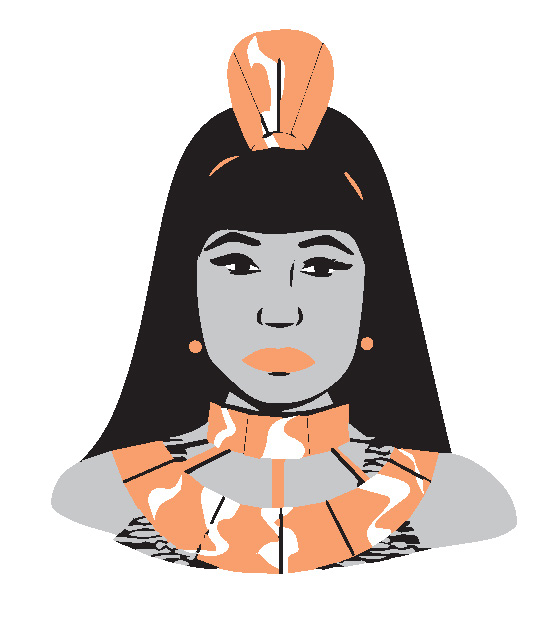In 2014, Nicki Minaj revealed that she no longer considered herself a female rapper.
This wasn’t part of some spur-of-the-moment rant, nor was it a trademark theatrical performance by one of her outré alter egos. There was no cotton-candy-colored wig, no amazing Technicolor bustier dress. Instead, Minaj sat demurely, with neutral makeup and sleek black hair, for a movie press junket: “I’m sorry,” she said matter-of-factly. “I see myself as a rapper.”
Minaj, whose lyrics once declared that she “came to save a thing called female rap,” clarified her statement months later. She said her newfound aversion to being called a “female rapper” was because of the term’s dilution. After all, Minaj is, in fact, exceptional.
What might Minaj’s statement mean to the hip-hop zeitgeist? In 2017, the genre is widely identified with black male experience—a crucial perspective (Kendrick Lamar’s dizzying deconstruction of racial politics in America comes to mind), but one that too often positions women as “bitches” or sylphlike props.1
I remember a time—not long ago—when hip-hop emancipated women, especially women long denied a voice. Within the span of hip-hop’s young life, female rappers have gone from celebrated contributors to footnotes. Legions of books and culture critics chronicle hip-hop’s meteoric rise, yet seldom are women mentioned, much less given props: perhaps it’s no wonder that its arguable queen wishes to eschew the title. But in reality, women who rap have been a part of hip-hop’s fabric from the very beginning—and in many respects, they embody its true spirit.
*
The queen on the scene since I was a teen. / The pioneer, yes, I’m here to ’splain what I mean.
—Queen Lisa Lee
The gestation period for hip-hop spanned generations—West African griots; young black Americans signifyin’ and playing the dozens; dancehall toasters; drill sergeants; radio DJs; the verbal barrages of Pigmeat Markham, Gil Scott-Heron, and Muhammad Ali—and while its birthplace is debated, its birth was joyous. Most credit a back-to-school jam in the Bronx where DJ Kool Herc first isolated and extended the break (that is, the instrumental beat) of a song, so partygoers could dance longer while he emceed. Some Brooklyn natives say the work of local pioneers Pete “DJ” Jones, Grandmaster Flowers, and KC the Prince of Soul predates Herc’s legendary party and provided the blueprint of hip-hop, albeit more rooted in disco and funk. Either way, hip-hop’s pillars—DJing, emceeing, breakdancing, and graffiti—provided a creative outlet for young, opportunity-starved black men and women.
Since it was so fresh, there weren’t many rules in the burgeoning cultural movement. Men were the more prominent emcees in those early days, but women grabbed the mic, too, and while they were sometimes seen as a...
You have reached your article limit
Sign up for a digital subscription and continue reading all new issues, plus our entire archives, for just $1.50/month.
Already a subscriber? Sign in





